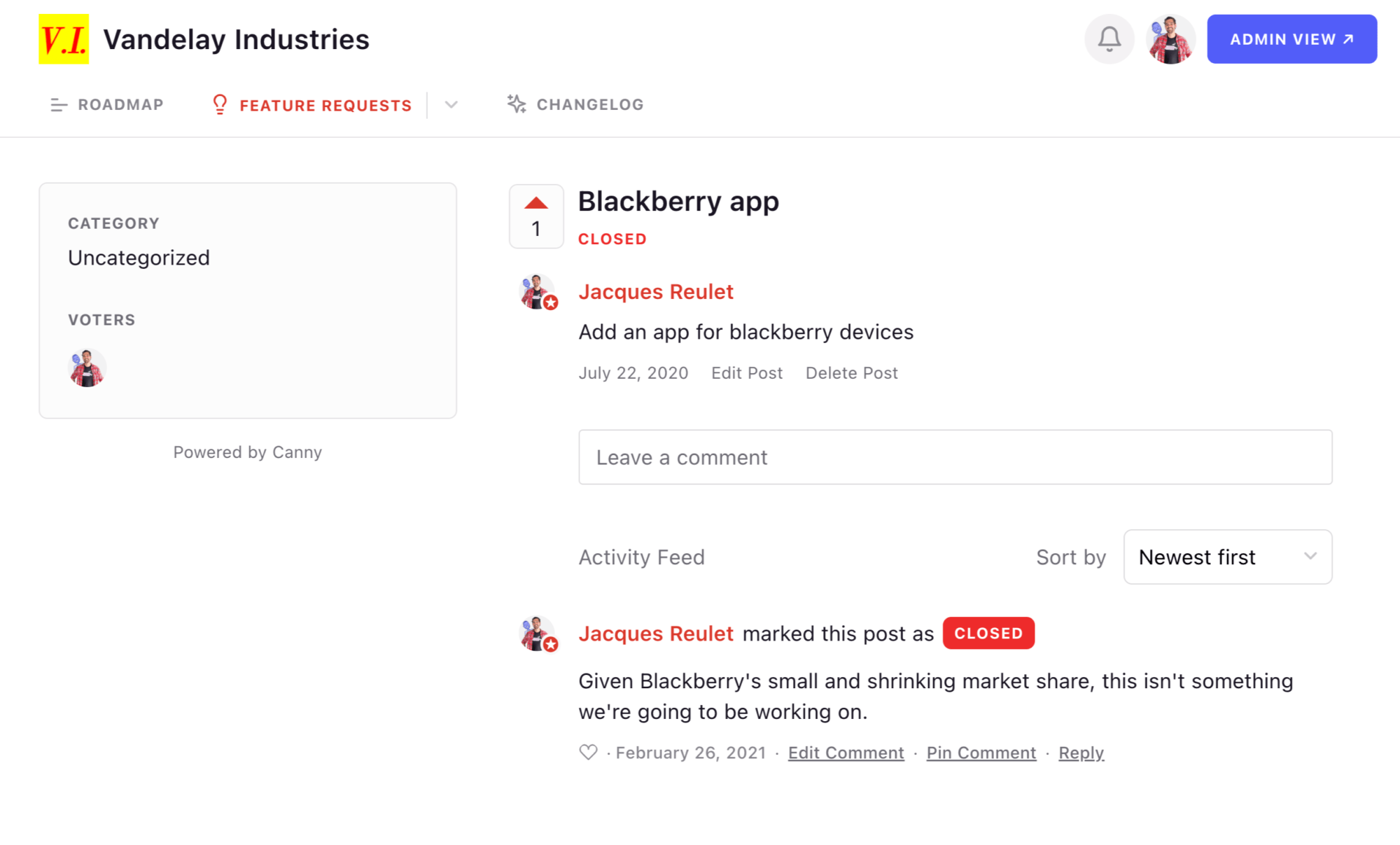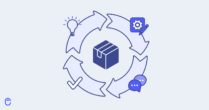Roadmapping.
Sprint planning.
Strategy sessions.
Whatever your team calls them, planning meetings are a fact of life for any functional company.
A productive planning meeting requires 3 key components:
- Representatives for those who will be affected by the meeting’s outcomes
- A clear decision that needs to be made
- Actionable steps going forward
But, even though these components make for a productive meeting, there’s still something missing.
Everyone has a voice at meetings—except your users
Often, a planning meeting will include at least one representative from each of your company’s relevant teams—the product team, marketing, support, design, etc.
But in most cases, there is a critical voice missing—the voice of your customers.
This makes zero sense. Presumably, you’re building a product for your customers.
Now, it’s obvious that you can’t invite your entire user base to chime in every time you need to assign projects. Even if you could, many of them are going to say the same things.
Plus, you’d have to keep track of who’s making which requests—is the request coming from freemium users, or people on a trial who just showed up? Or the long-term enterprise clients who genuinely matter to the company balance sheet?
But, the customer’s voice needs to have representation.
In most companies, this looks like a beleaguered support team armed with loosely connected tickets and conversations.
When you hear phrases like, “we’ve been hearing a lot of…” or “I recently talked to one user who…” you know you’re not dealing with hard data.
These support anecdotes may be right, but unless they dig up their ticket history and slap the takeaways on a spreadsheet, they’re not especially helpful.
Bring real user feedback into the room
You can’t make informed decisions based on disjointed anecdotal data. That results in wasted engineering resources that may or may not be relevant to most of your users.
But you also can’t just ignore your customers. This can result in creating a product or feature that you love, but that is lousy for your user base.
Your customers need a proxy to be in the room on their behalf, accurately conveying their sentiments.
This is where Canny comes in.
Someone brings Canny up on a screen, and now suddenly, “what do our users think?” has an answer.
You can see what requests are the most popular, read user comments, identify which users are requesting what, check how long a submission has been on the board. The data is there. It’s immediate. No need to “circle back.”
When a request is submitted, you can ask users to clarify. Just add a comment and every voter will be notified that an admin has asked a question. In other words, you can start a one-to-many conversation with customers without needing to sort through a slew of emails, or send out a tedious survey.
Decisions without guesswork
So what are the results of inviting Canny into your team meetings? Well, with the user’s voice in the room, you can be confident that all stakeholders have had their say.
You can filter the feedback to see who’s asking, what they’re paying, how long they’ve been around, and other key variables.
There’s a balance between building the product you want to develop and the product your users are asking for. You’ll have to use your development resources strategically, and you won’t build what your customers are asking for every time. You still get to decide what you build, but now you have actual data on what your customers want to help inform your decisions.
When you use Canny, you know which requests will make the most significant impact on the bottom line. You can quickly tag and identify low-hanging fruit. You can also decide that a request just isn’t in the cards. Just close it and explain your reasons. This way, current and future users can see that explanation.

Making your meetings better by incorporating user feedback
Having all this data at your fingertips also frees up other resources:
- Support teams don’t have to compile educated guesswork. They can simply focus on supporting your users. They also don’t have to field every feature request as a support ticket, since users now have a clear place to leave that feedback. Support may not even need to show up to the next planning meeting!
- Product teams don’t have to guess which requests will have the most impact. They have a clearly-defined place to go to see what users are asking for, and they know which users to reach out to when clarification is needed. They can even use Canny’s product roadmapping software to add feature requests to your roadmap.
- Marketing knows which features to trumpet once completed.
- Sales can circle back with a prospect once their dealbreakers are addressed.
- Founders, the executive team, and other key stakeholders can easily keep tabs on the speed of development.
Finally, Canny lets you hold people accountable. With just two clicks, you can assign ownership of a task to a team member immediately. That way, everyone walks out with their action plans clearly defined.
Integrating user feedback into your planning meetings makes them more productive and useful. You can feel confident that you’re prioritizing and building your roadmap with your users in mind.
Having a feedback tool like Canny will give them a voice in your meetings—and it’s as easy as pulling up a shared screen.







User feedback is vital! Thanks for sharing a system that will allow us to leverage that information in order to further refine our procucts